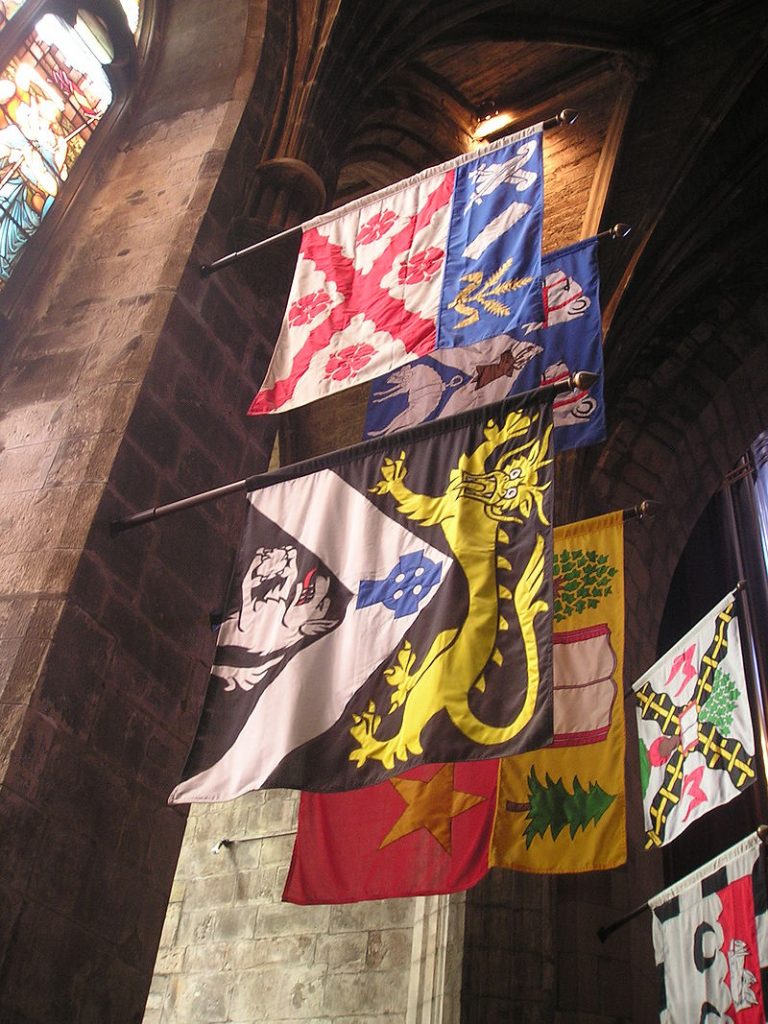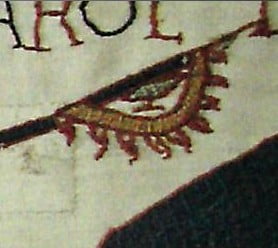Flag/Banner

Source Inner Sea World Guide
A flag is a colorful banner that bears the heraldry or symbol of a nation or organization. A character with the Flagbearer feat who bears a flag can grant additional combat bonuses to nearby allies. Carrying a flag in combat requires a free hand.
The Quintessential paladin
Author Alejandro Melchor
Series Quintessential Series
Publisher Mongoose Publishing
Publish date 2002
Seen especially among members of an order, banners are rectangular, square or triangular shaped cloth with the symbol of the order the paladin belongs to, or the symbol of his god, appearing upon them. By itself, a banner has little effect but, while carried by a paladin, it can inspire others when it is seen in a large combat. A standard bearer customarily carries a banner but sometimes the paladin himself carries it.
In oriental cultures, the banner is strapped to the warrior’s back to free his hands for combat. Common banners are nothing more than symbols but sacred banners have special effects for paladins. A paladin can pour positive energy into a sacred banner by spending two turn undead attempts. Doing so results in his aura of courage extending an additional 10 feet per class level for a number of rounds equal to his class level. A sacred banner must be blessed by a cleric of the paladin’s religion (or alignment) in a simple ceremony.
Raven banner

The raven banner is a flag, possibly totemic in nature, flown by various Viking chieftains and other Scandinavian rulers during the ninth, tenth and eleventh centuries CE. The flag, as depicted in Norse artwork, was roughly triangular, with a rounded outside edge on which there hung a series of tabs or tassels. It bore a resemblance to ornately carved “weather-vanes” used aboard Viking longships.
Scholars conjecture that the raven flag was a symbol of Odin, who was often depicted accompanied by two ravens named Hugin and Munin. Its intent may have been to strike fear in one’s enemies by invoking the power of Odin.
“The Anglo-Saxons probably thought that the banners were imbued with the evil powers of pagan idols, since the Anglo-Saxons were aware of the significance of Óðinn and his ravens in Norse mythology.”

 Buy me a coffee
Buy me a coffee